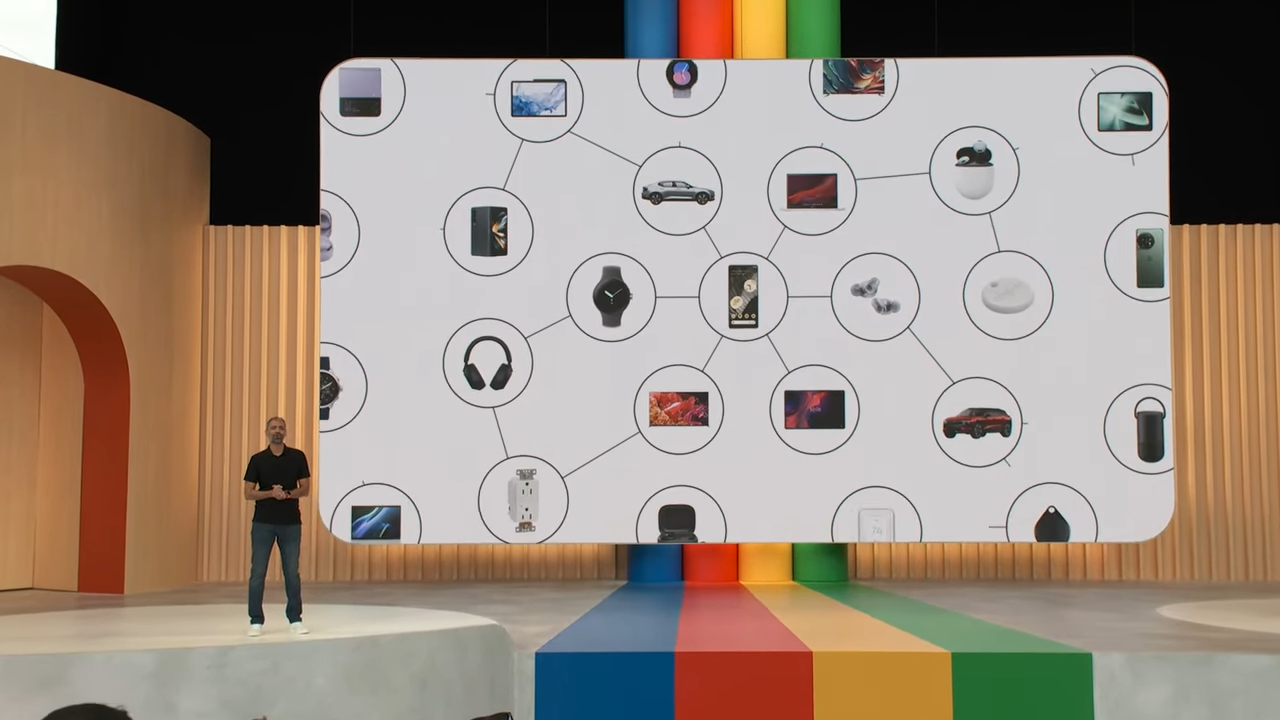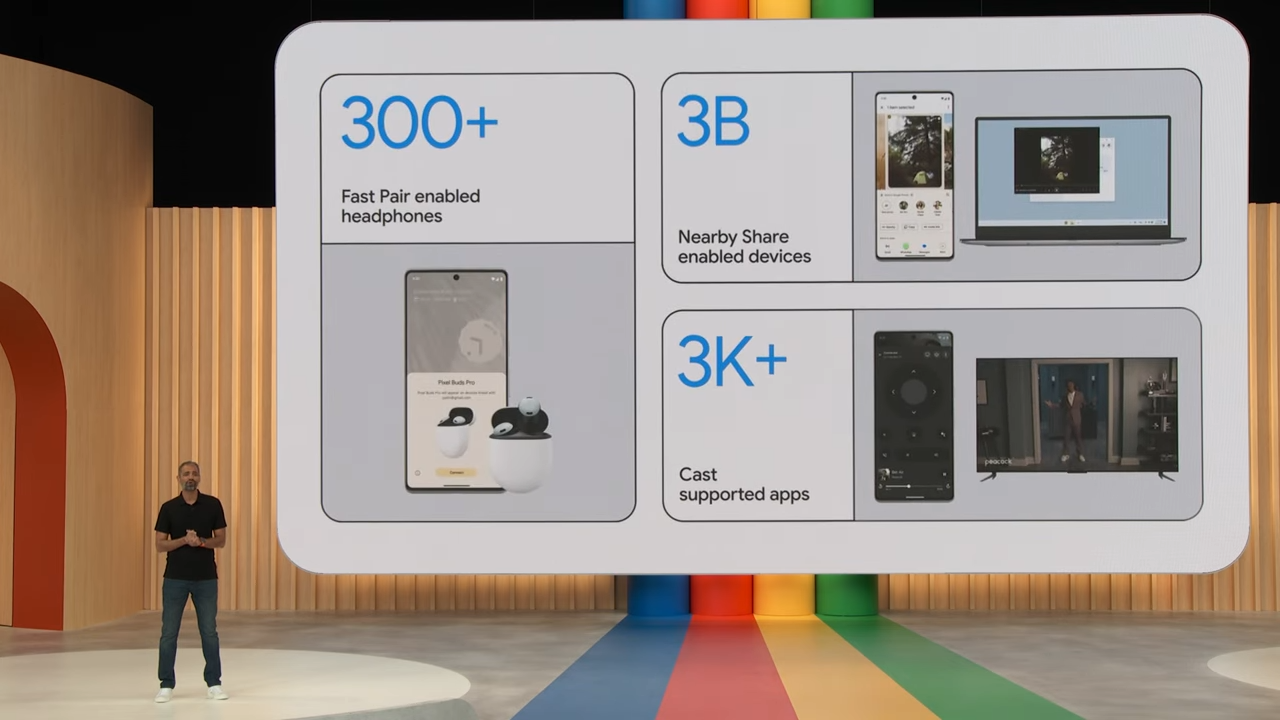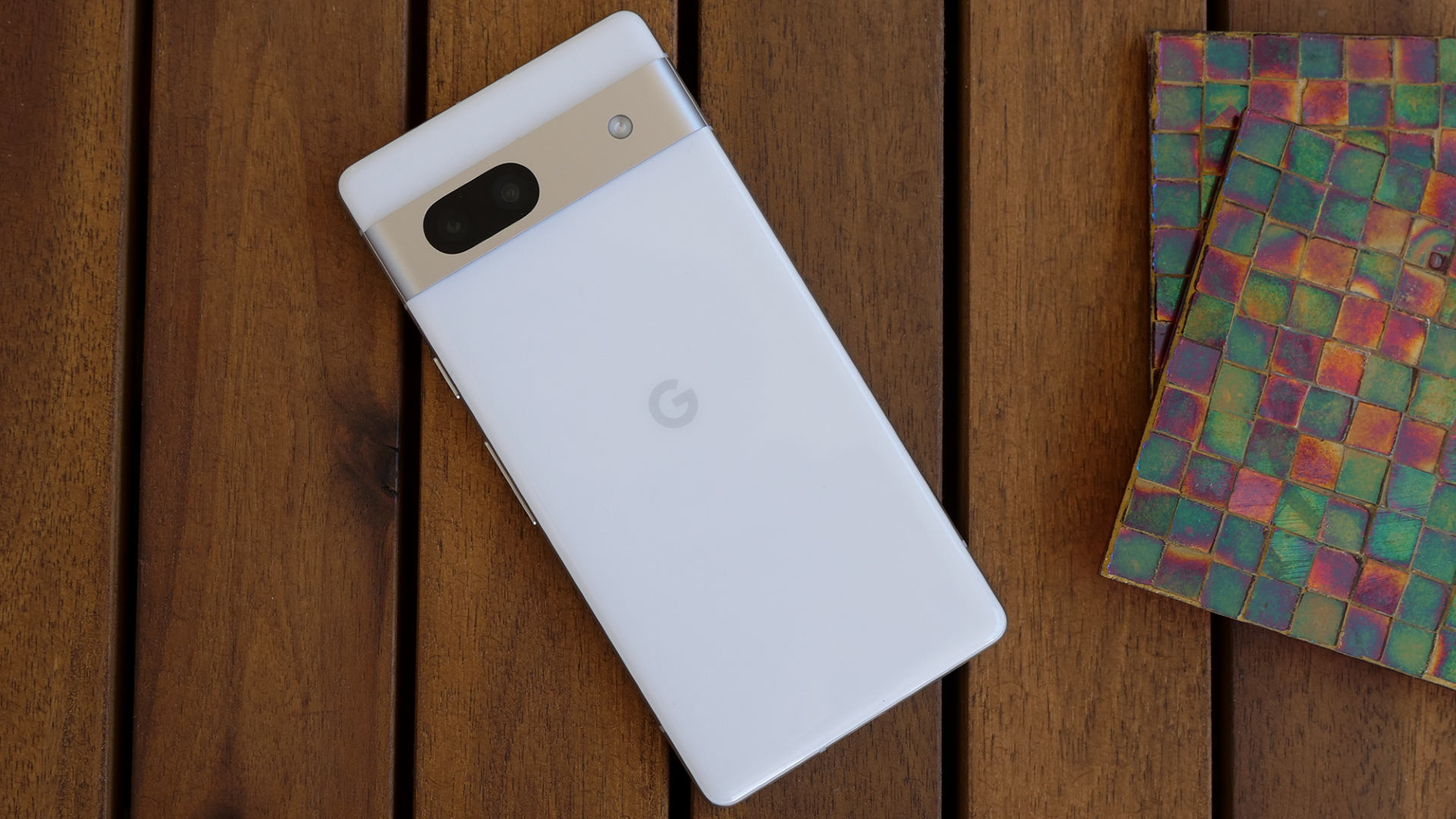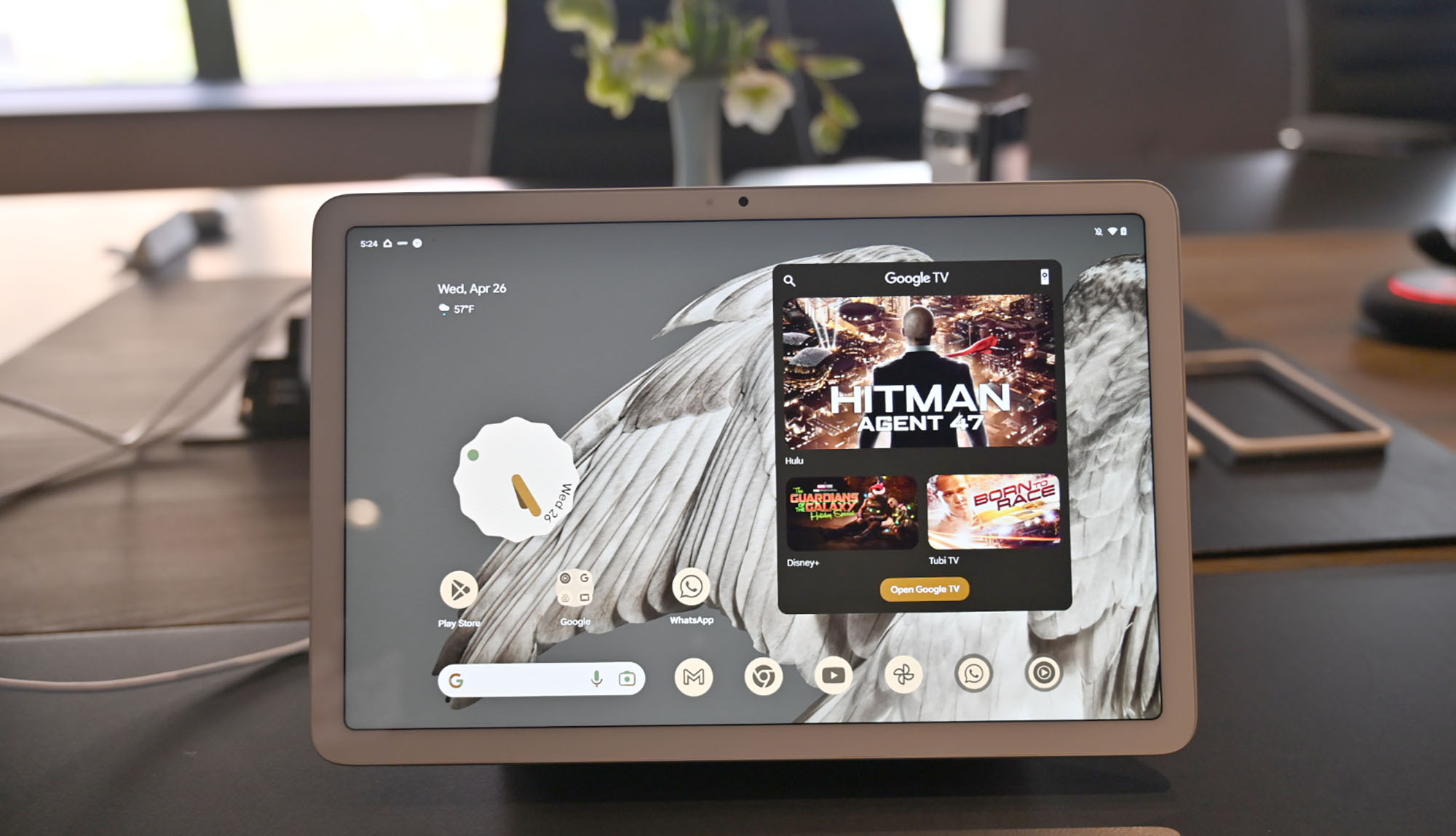Google's grand 'Better Together' plan to take on Apple is finally coming together
Google’s latest shot at building an ecosystem is the antithesis of Apple’s walled garden

There are over three billion Android devices, but even though they breathe the same OS, their experience has never felt like one, coherent system. Products from makers like Samsung and Xiaomi are mistakenly believed to run on separate OSes with their own in-house tech for exchanging files, pairing Bluetooth accessories, and more.
So for the last few years, Google has made it its mission to tie the diverse portfolio of Android devices together with an ecosystem of services that’s consistent and familiar. This is pulling from the playbook that has allowed Apple to turn each of its product lines into a hit for decades. And at this year’s annual Google I/O developer conference, the pieces of the company’s “Better Together” theme finally seem to be falling in place.
Androids, Assemble
“Android is about more than just different types of devices,” said Sameer Samat, the vice president of the Android Ecosystem. “It’s also about connecting them. And we’ve been building features to help your devices work better together.”
The way Google has set out to accomplish this is by adopting open standards and building core functions that let Android devices not only talk to each other, but also to other platforms like Windows, and even Apple in some cases. This is so that when you invest in an Android phone, for example, it will be already in sync with any other gadget you own whether it’s smart home appliances or headphones, no matter the brand. It equips Google with an edge over Apple’s ecosystem, which is severely restricted to Apple-made machines.
Nearby Share, Google’s Airdrop-like service to easily send and receive files across devices, for instance, now supports Windows PCs and Chromebooks — which means you can exchange content to and from billions of devices without installing any additional apps. Heck, Android’s open-source codebase has even spawned a nifty workaround for using Nearby Share on a Mac.

Similarly with Fast Pair, Android phones and Chromebooks can pair with over 300 wireless headphones in a tap without you having to manually go through the Bluetooth settings. Yet again, Google has taken a page out of Apple’s playbook and applied it to a far more diverse set of devices instead of limiting it to a handful of its own accessories.
At the I/O keynote, Google also announced an update to its Find My Device app, which will soon let you keep tabs on your accessories from dozens of companies in one place. More importantly, it will take advantage of the expansive network of billions of Android devices to ping a lost device and track it down wherever in the world it is. Plus, Google is developing a new cross-platform standard with Apple that will prevent anyone from stalking you by informing you when an unknown tracker is traveling on you irrespective of its brand.
Stay in the know with Laptop Mag
Get our in-depth reviews, helpful tips, great deals, and the biggest news stories delivered to your inbox.
This was followed by Google reiterating its commitment to RCS, another open standard that enables modern instant messaging features on an SMS app and lets Android users chat over the internet even when they’re on different SMS apps — as opposed to iMessage’s notoriously walled-off tech.
“We hope every mobile OS gets the message and adopts this standard,” said Samat, dunking on Apple.

At home with Google
The smart home, of course, plays a vital role for Google in building this ecosystem, especially given that an average U.S. household now has close to two dozen connected devices. In service of that goal, the Google Home app got a major facelift, which makes managing the varied gadgets people own much less convoluted and allows Google Home users on an iPhone to set up Matter-enabled, an open-source tech that lets smart home devices talk to each other regardless of their manufacturers, appliances.
Google’s emphasis on fostering an ecosystem that isn’t restricted to one brand was on full display at I/O and its keynote was a stark contrast to Apple’s. Each announcement was accompanied by a drumbeat of third-party partners, and a round-the-clock reminder that Google wants to rope you into its ecosystem with adaptable software, not just hardware.

My god it’s full of Pixels
Of course, it’d be remiss of Google to overlook how crucial reliable and enticing hardware is in an ecosystem, and fortunately, it didn’t. The company has not only revived its software for all sorts of form factors like smartwatches but also introduced its own take on what the best implementation of these categories looks like.
At I/O, Google expanded its Pixel lineup with three new products: The Pixel 7a, its annual mid-range smartphone upgrade that we found to be the best phone for most people, the Pixel Tablet, an Android tablet that you can dock to turn into a smart home hub when you’re not using it, and the most exciting, the Pixel Fold, a 5.8-inch phone that folds out into a 7.6-inch tablet.

Though these Pixel products vary in form and function, they’re all powered by the same Google Tensor G2 chip, which, based on my experience, ensures the company’s software remains consistent no matter how much you spend. It outsmarts Apple’s iPhone lineup, which appears to have run out of ideas and has begun to bundle yesteryear chips on non-Pro models.
Google’s “Better Together” plan has been years in the making and at long last, it’s coming together. For years, Google has tried to take on Apple without capitalizing on Android’s cornerstone: diversity. However, its latest all-encompassing approach is shaping up to be an effective and compelling alternative to Apple’s walled garden ecosystem.
Shubham Agarwal is a freelance technology journalist from Ahmedabad, India. His work has previously appeared in Business Insider, Fast Company, HuffPost, and more. You can reach out to him on Twitter.
